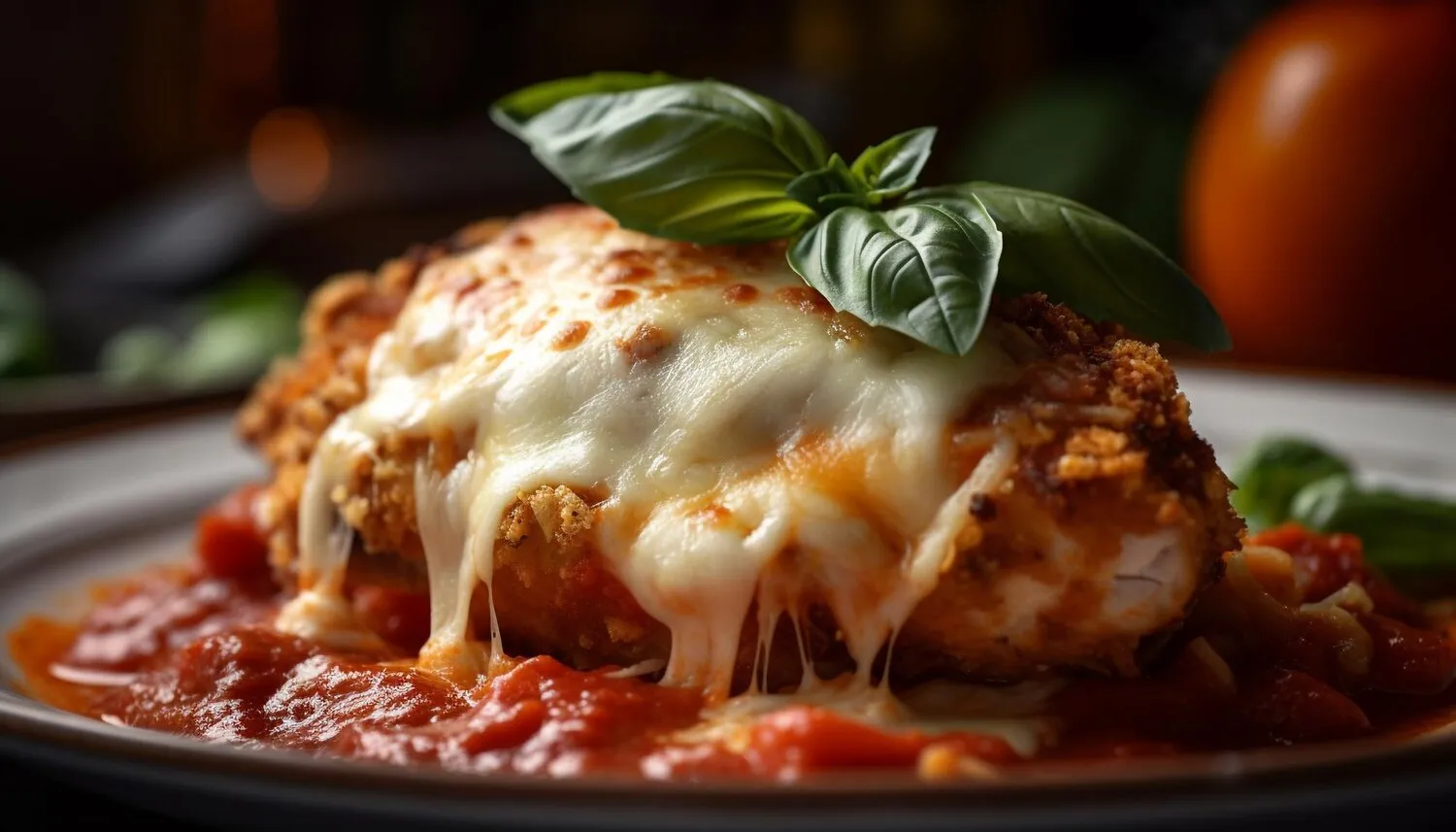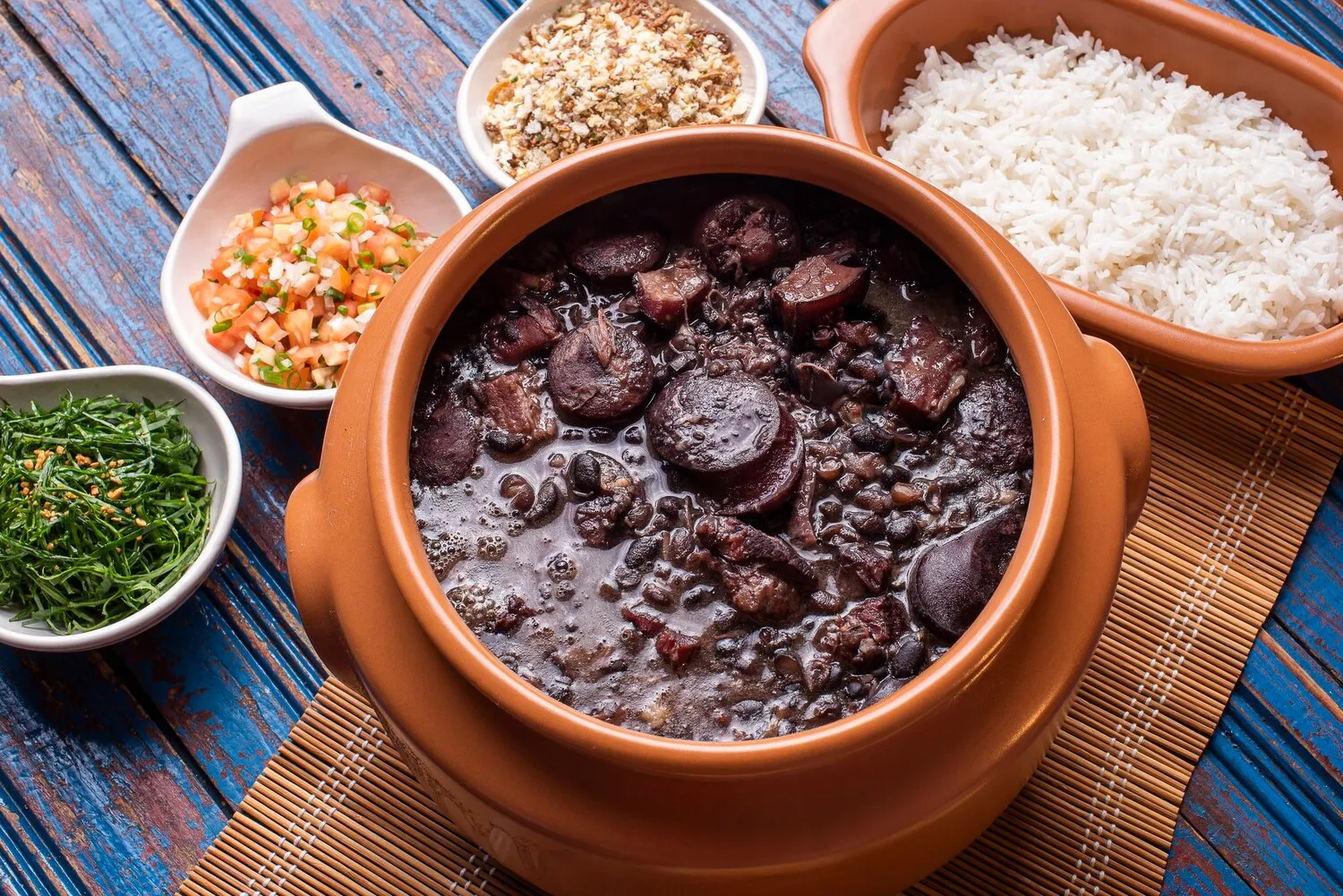
Parmegiana
Breaded steak topped with tomato sauce and melted cheese, served with rice and fries.
Nutrition Facts
* The % Daily Value (DV) tells you how much a nutrient in a serving of food contributes to a daily diet. 2,000 calories a day is used for general nutrition advice.
Restaurante Empório
The dish described, breaded steak topped with tomato sauce and melted cheese, served with rice and fries, is not a traditional Italian Parmigiana. Parmigiana typically refers to eggplant Parmigiana (Parmigiana di melanzane). This steak version likely evolved from Italian-American influences and adaptations in other countries where Italian cuisine has been popularized. It shares similarities with dishes like Milanesa Napolitana (Argentina) and possibly some Italian-American adaptations of veal or chicken parmigiana.
This dish, as described, is more of a comfort food combination, representing a fusion of different culinary traditions, likely with strong influences from Italian-American and South American cultures. It is typically enjoyed as a hearty and satisfying meal in casual settings.
Italian-American Influence
The concept of breaded and fried meat topped with tomato sauce and cheese is a hallmark of Italian-American cuisine. The dish likely draws inspiration from chicken or veal parmesan, but adapted to utilize steak.
South American Popularity
Dishes like Milanesa Napolitana are extremely popular in South America (Argentina, Uruguay) and resemble this dish, though often served with different side dishes. Rice and fries as sides are common there.
Comfort Food Status
The dish is considered a comfort food because of its rich flavors, satisfying textures, and the familiarity of its components. It provides a sense of indulgence and is often associated with home-style cooking.
The dish combines savory, rich, and slightly tangy flavors. The crispy breaded steak provides a satisfying texture and meaty taste, complemented by the acidity of the tomato sauce and the creamy, melted cheese.
The primary flavors come from the breaded steak (often beef), offering a savory, umami base. The tomato sauce contributes acidity, sweetness, and herbaceous notes, often with garlic and oregano. The melted cheese, typically mozzarella, provides richness, saltiness, and a smooth, creamy texture. The rice is usually a neutral flavor providing a starchy side. Fries add additional savory and salty notes.
Steak Preparation
Pound the steak to an even thickness for consistent cooking. Season generously with salt, pepper, and garlic powder before breading. Ensure the breading is even and adheres well to the steak.
Tomato Sauce Quality
Use a high-quality tomato sauce or make your own from scratch. A simple sauce with canned tomatoes, garlic, oregano, and a touch of sugar can be very effective. Simmer the sauce for at least 30 minutes to develop the flavors.
Cheese Selection
Fresh mozzarella is the traditional choice, but a blend of mozzarella and provolone can add more flavor and melt beautifully. Grate the cheese evenly over the steak to ensure consistent coverage.
Frying Technique
Maintain a consistent oil temperature of around 350°F (175°C) when frying the steak. Avoid overcrowding the pan to ensure even browning and crispiness. Make sure to use the correct type of oil that holds its stability under high temperatures.
Explore additional Classic Brazilian dishes and restaurants
Explore Classic BrazilianDiscover top dining spots and culinary experiences in Cajamar.
Explore CajamarLearn more about the food culture, restaurant scene, and culinary heritage of Brazil.
Explore Brazil